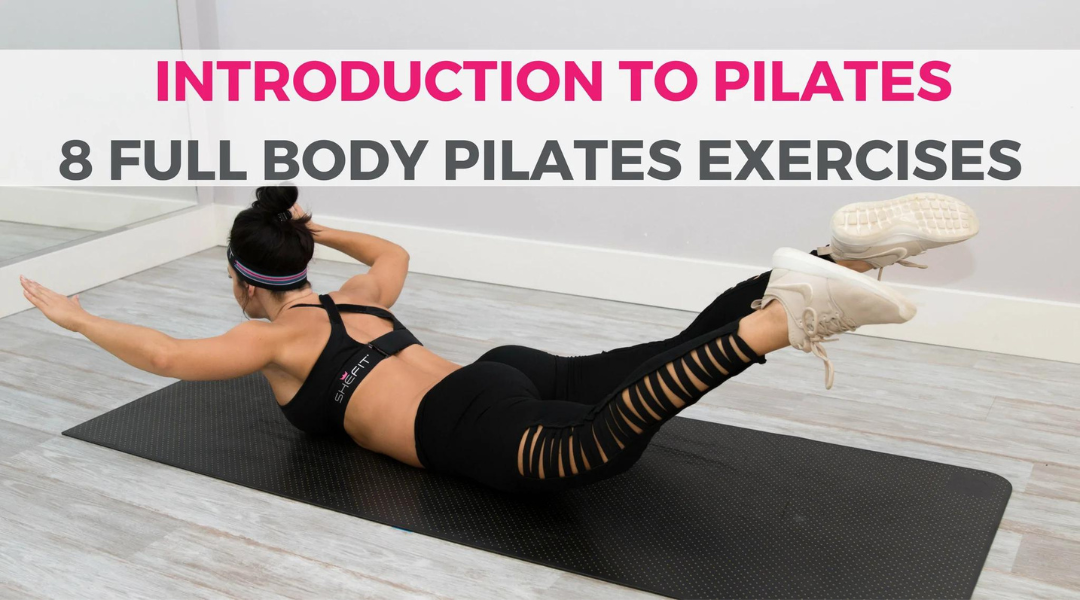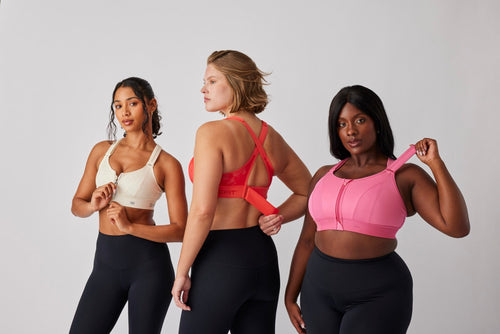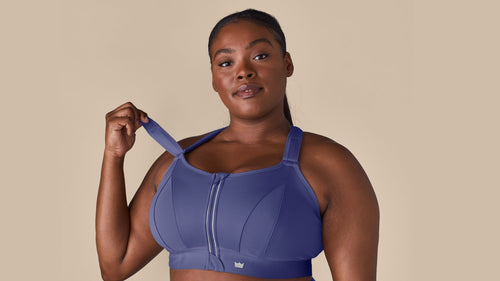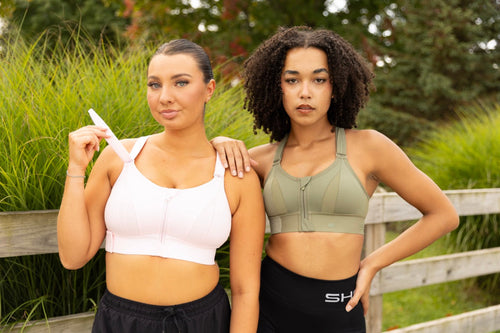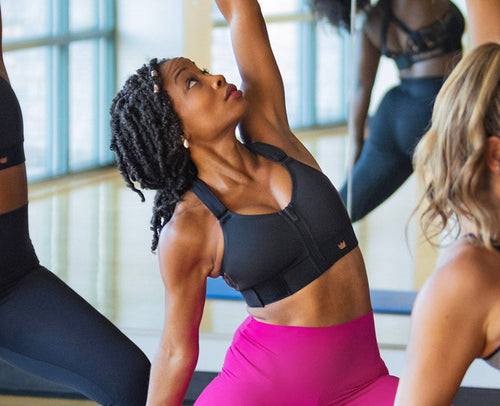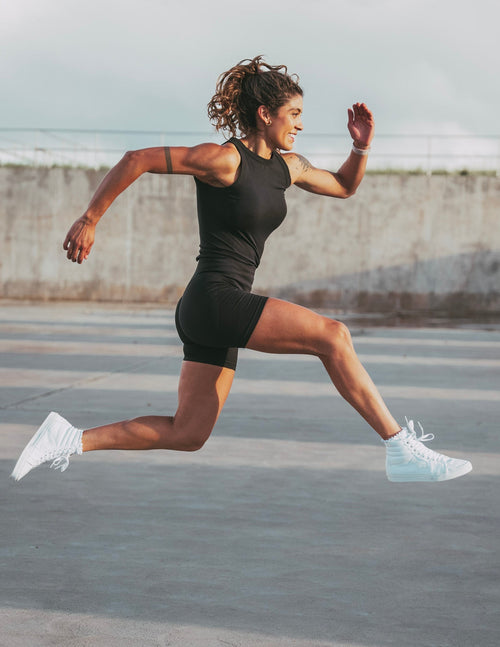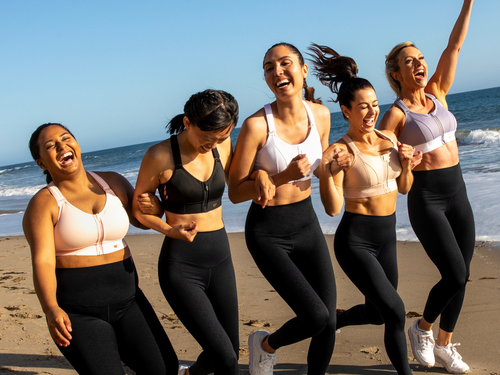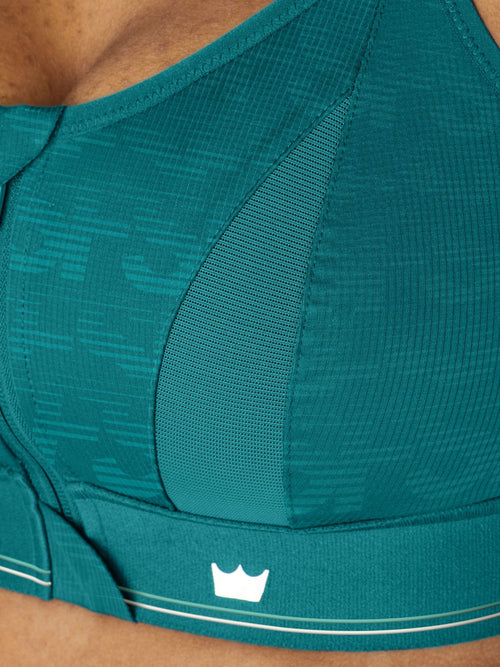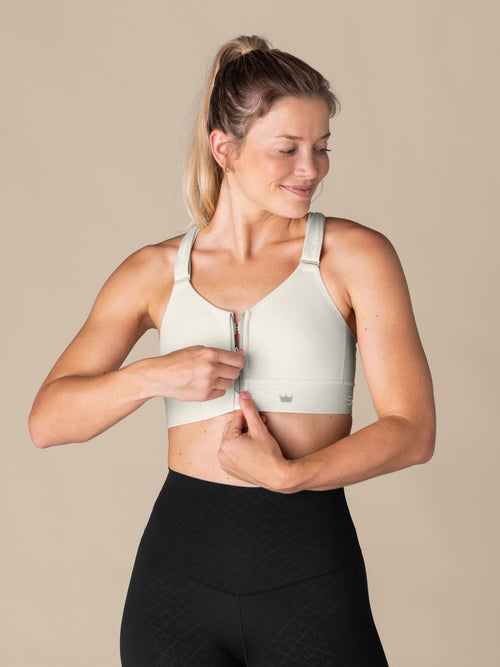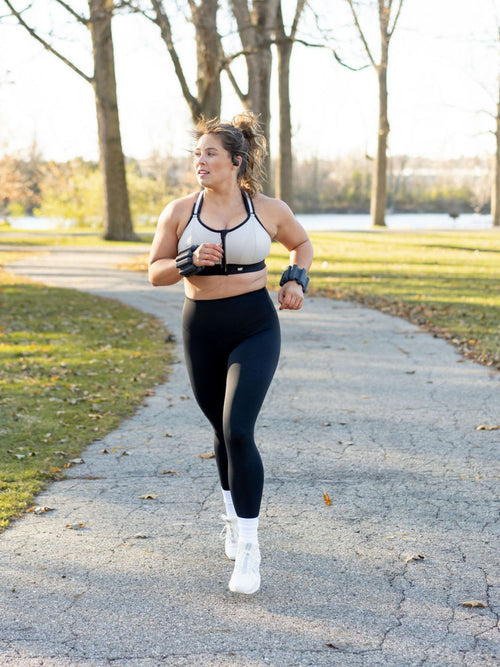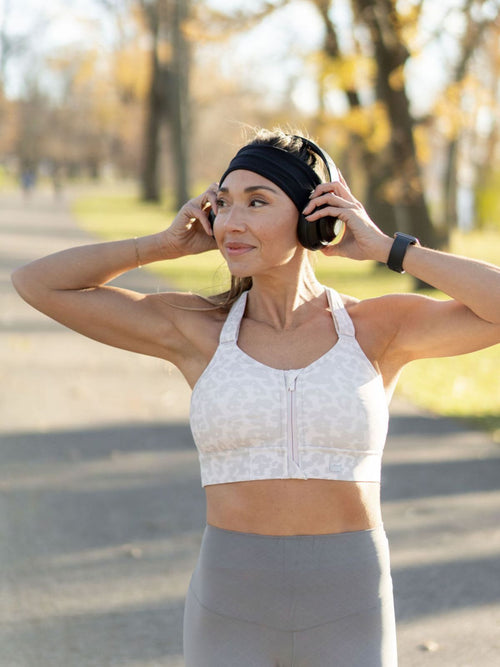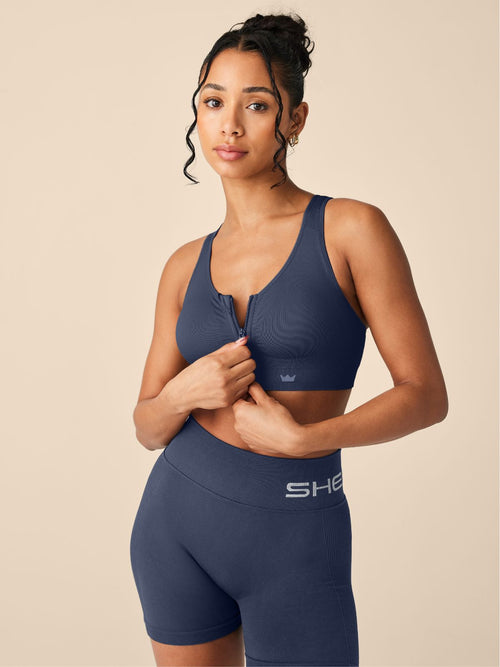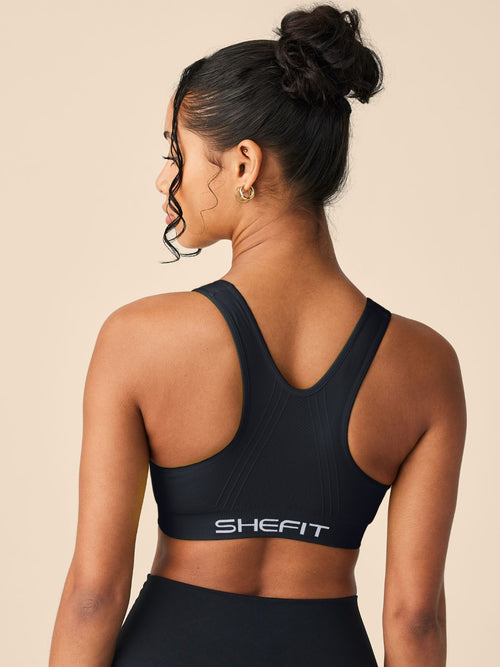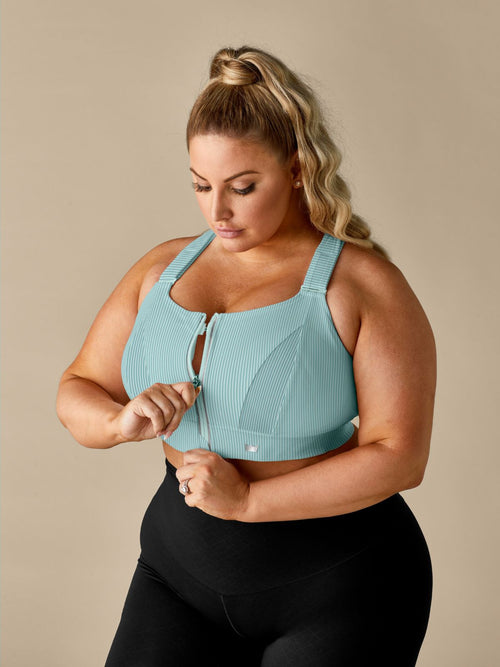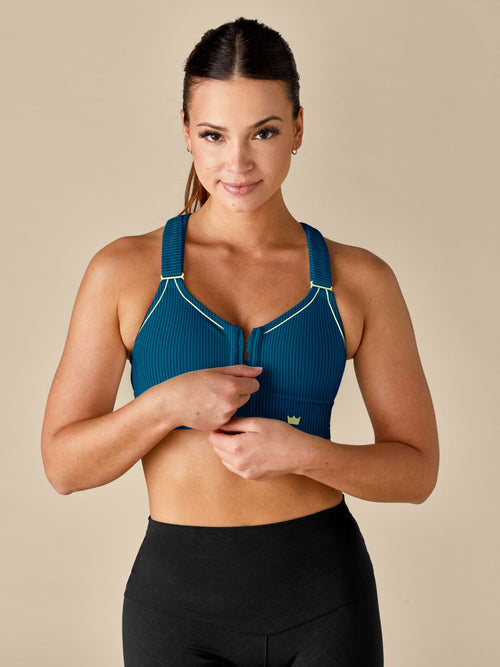New Year Sale 20% Off Shop Now
At-Home Pilates for Beginners: Increase Your Flexibility
If you’re looking for a way to increase your flexibility and strength and get leaner, all without spending countless hours at the gym, then look no further. You might think a toned body is only achievable by lifting weights every day of the week, but this post will show you that there are many ways to tone up.
You can just as easily get a full-body workout at home with your yoga mat as you can at an expensive Pilates studio. It sounds unbelievable, but it's completely true. In this post, we’ll show you how to get started with Pilates using 8 beginner-friendly movements with a few tips sprinkled in.
If you're on the fence about Pilates, then let us convince you to cross over the fence with the following points. If you don't require any convincing, skip ahead to our 8 Pilates exercises.
6 Reasons You Should Start Pilates Today
Pilates is a form of exercise that uses controlled movements designed to improve physical strength, flexibility, and posture. The movements focus primarily on your core, but also condition your body and build stronger, more sculpted muscles without any excess bulk. The result is a sleek, toned body.
Pilates can also help to improve your posture from the ab and back strength you’ll gain through the controlled movements. But you may already know this, so let's look at several benefits of Pilates you may have never heard of.
Here are 6 compelling reasons you should absolutely make Pilates part of your workout routine:

1. Pilates Is for Everyone!
Pilates can be done by anyone – man, woman, young, or old. No matter your age or physical ability, you can do Pilates. There are thousands of possible exercises and modifications, making it far more flexible to meet your individual needs. In other words, beginners and seasoned athletes alike can enjoy Pilates.
2. Pilates Works Your Core and Full Body
One of the key components of Pilates is the emphasis on core strength. The core is the “powerhouse” of the body. Pilates strengthens and conditions the core while simultaneously working your arms and legs.
The exercises focus on movements and positions that not only activate your core but also rely on your extremities (arms and legs) for control. That's why Pilates is so much more than exercise to strengthen your abdominal muscles.

3. Pilates Reduces Back Pain
One of the main components of Pilates is the connection between mind and body and the overall awareness of how your body moves. As a result, you become more aware of the placement of your spine and pelvis, especially during your Pilates routine.
Pilates has been shown to reduce chronic lower back pain in as little as 20 total hours of practice. The exercises are low-impact, which makes them perfect for people who are in pain. Pilates is a gentle workout that is proven to accommodate those with back pain but is challenging enough to build core muscles.
4. Pilates Increases Energy
You’ll breathe deeper, providing your body with more oxygen and effectively increasing your energy levels. Once you finish your Pilates routine, you’ll find yourself feeling more energized, but also de-stressed, peaceful, and relaxed.

5. Pilates Improves the Mind/Body Connection
Pilates workouts are designed to improve your balance and coordination by teaching a stronger connection between the mind and the body. Pilates movements are done with control and focus to help you become more aware of your alignment.
6. Pilates Improves Balance and Coordination
Pilates helps to improve your overall balance by stabilizing your core. The movements of Pilates work the body as a whole, which helps to improve coordination and posture but also has an intense focus on the small, deep muscles found in your core.
You can see why Pilates is such an incredibly popular form of exercise.
So grab your mat, and throw on your favorite SHEFIT Low Impact Sports Bra, because it's time for Pilates! To help you get started, here are 8 beginner-friendly movements to build your strength and core.

8 Easy Pilates Workout Moves for Beginners
This workout consists of 15 reps for each movement. The goal is to focus on control and breathing throughout each exercise; this is not a race. As always, it's never a bad idea to do some dynamic stretching before any type of workout.
Pilates is no exception. Once you've stretched your body, you're ready to get started!

1. Glute Bridge: 15 Reps
Glute bridges can loosen your lower back if it’s tight and relieve pain. This exercise is useful for people who sit for long hours during the day.
Step 1: Lie on your back with your feet flat on the ground and knees bent.
Step 2: Press your heels into the ground and lift your hips into the air as high as you can.
Step 3: Pause at the top of the movement, then lower your hips to the ground.
Muscles Targeted:
This move works the large gluteus maximus muscle, which is the muscle that primarily makes up your butt. It also works the hamstrings to a lesser degree.

2. Lying Legs Extension: 15 Reps
You can do this move with either one leg at a time or two. Start with one if you’re a beginner because it’s slightly easier. When you’re ready for more of a challenge, add the second leg.
Step 1: Lie on your stomach with your forehead on your hands and legs out straight.
Step 2: Keep your knees as straight as possible and lift one or both legs completely off the ground.
Step 3: Lift your leg as high as you can, then pause for a count of two. Squeeze your glutes as you pause.
Step 4: Lower your leg or legs back to the ground.
Muscles Targeted:
Similar to the glute bridge, this move works the gluteus maximus and hamstring. It also incorporates the lower back muscles.
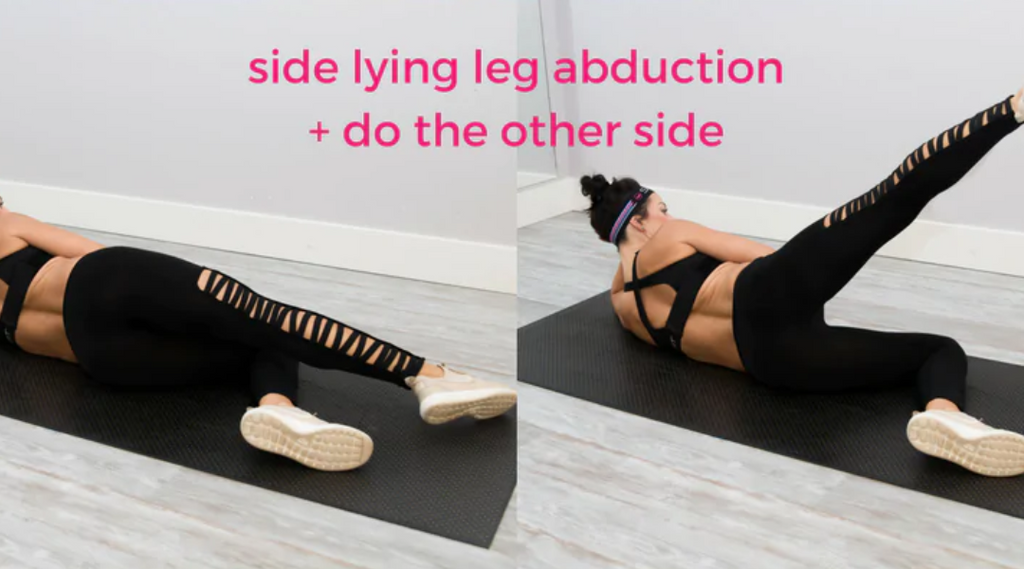
3. Side Lying Leg Abduction: 15 Reps Per Side
It might look easy, but when done correctly, this exercise usually burns! It targets a smaller muscle on the outside of your hip, which you should feel when you’ve done a few sets of this movement.
Step 1: Lie on your side. Your body should form a straight line from your head to your ankles.
Step 2: Support your head with your bottom arm and stack your legs on top of each other with your knees straight.
Step 3: Lift your top leg in the air, keeping your knee straight. Make sure you don’t twist the leg, simply raise it straight up.
Step 4: After lifting the leg as high as possible, lower it back to the other leg.
Muscles Targeted:
This movement works your butt and hip muscles. More specifically, it targets the gluteus medius, which is responsible for hip abduction (moving your leg away from your body).

4. Back Extensions: 15 Reps
This exercise strengthens the muscles of your lower back and improves their endurance. When your lower back muscles have more endurance you’re less likely to feel pain, so this exercise can help prevent and reduce lower back pain.
Step 1: Lie on your stomach with your forehead on the ground, arms reaching forwards, and legs out straight.
Step 2: Lift your arms and chest off the ground, reaching your arms forwards at the same time.
Step 3: Pause at the top of the movement. Then, lower your arms and chest to the ground.
Step 4: You can lift your legs at the same time to make this movement harder.
Muscles Targeted:
This movement works the lower back muscles. More specifically, it targets the erector spinae and multifidus, which run in parallel down your lower back.

5. Deadlift Upright Row: 15 Reps
Strength is the name of the game for this movement, which mixes a lower and upper body exercise into one. You’ll get the benefits of deadlifts, along with the shoulder and arm development of an upright row. Use a pair of light to medium dumbbells.
Step 1: Start standing with a dumbbell in each hand. Hold them in front of your thighs with your knuckles facing forwards.
Step 2: Push your hips back and keep your knees slightly bent as you reach the dumbbells past your knees. Keep your back flat.
Step 3: Stand up and lift the dumbbells, keeping your elbows above your hands. Stop when your hands reach chest height.
Step 4: Lower the dumbbells and begin the movement again.
Muscles Targeted:
The deadlift portion of this exercise targets your glutes, hamstrings, and lower back. The upright row works your rear delt (shoulder), biceps, and upper traps.

6. Goal Post Lifts: 15 Reps
If you’re looking to tone your arms, this is the perfect exercise. Use a light dumbbell or no weight at all for this challenging shoulder and arm workout.
Step 1: Hold a dumbbell in each hand if you’re using weight. Stand tall with your arms out to the side and elbows bent up at 90 degrees.
Step 2: Your elbows start at shoulder height. Make sure your palms are facing forwards.
Step 3: Keeping your arms and elbows bent at 90 degrees, slowly bring your elbows together in front of you.
Step 4: When your arms touch in front of your chest, bring them back out to the side again. Make sure your elbows don’t dip below your shoulders at any point in the movement, and your arms stay bent at 90 degrees.
Muscles Targeted:
You’ll feel this exercise in your shoulders, specifically the front (the anterior deltoid). You’ll also work the biceps and triceps.

7. Side Lying Leg Abduction OR Clamshells: 15 Reps Per Side
You can either try the side-lying hip abduction once more (exercise 3 above) or try something different with the clamshell. This move is similar to the side-lying hip abduction, but you’ll do it with bent knees. You can even add a mini-band around your knees to make the exercise harder.
Step 1: Lie on your side with your knees bent, similar to a fetal position.
Step 2: Stack your legs on top of each other and support your head with your hand.
Step 3: Keeping one foot on top of the other, lift the knee of the top leg as high as you can.
Step 4: Pause at the top of the movement before lowering your knee back to the bottom leg.
Muscles Targeted:
You’ll work the gluteus medius with this movement. It can be used as part of a rehab or prehabilitation program to strengthen your hips.

8. Lying Windshield Wiper: 15 Reps
This exercise works your abs and loosens your lower back at the same time. The twisting motion can be soothing if your lower back is tight and painful.
Step 1: Start on your back with your knees bent and in the air, as though you’re about to do a crunch.
Step 2: Stretch your arms to the sides to brace yourself.
Step 3: Drop both knees to one side, as low as you can.
Step 4: Lift your knees back to the center and drop them to the other side. Avoid touching your feet to the ground.
Muscles Targeted:
The side-to-side motion works the abdominal obliques, which run down the side of your torso. It also works the rectus abdominis, which runs down the center of your abdomen and forms the infamous 6-pack.
Did you make it through all 8 movements? Congratulations are in order then! See, Pilates is amazing, right? It's physical and cathartic, working your muscles and creating a quieter mind at the end of every workout.
A beginner Pilates workout isn't about exhausting your body to the point you'll never want to hear the word Pilates again. While it might be tempting to do 3 sets of each movement above, if this was your first time doing Pilates, it might be a better idea to try for more sets a little further down the line.
If done properly, you'll most likely feel your workout tomorrow. At least wait until then to evaluate if you want to do more sets.
Pilates for Beginners - Pilates for Everyone
If a lean, toned body without any excess bulk is what you’re after, then Pilates is the workout for you. Just be sure to pair your Pilates routine with weekly sessions of cardio.
Even though Pilates is considered more of a low-impact workout, you’ll still need a good sports bra to make sure there’s no cleavage spilling out when you stretch and bend.
For optimum support, try Shefit's Ultimate Sports Bra, which is famous for its custom, adjustable fit. This means you’ll not only get the support you need but also the comfort and shape you desire.
You’ll be able to focus less on what you're wearing and more on your movements to get the most out of your Pilates session!
Hopefully, you can see now that Pilates is perfect for beginners. Many workout evangelists will say the same thing about any type of workout, but because of the way you can customize each movement, Pilates for beginners is worthy of the hype.
Pilates FAQs
You can't talk about Pilates for beginners without answering a couple of burning questions. So, in case you're sitting there with some of the questions, we often hear, we thought it might be a good idea to answer two of the most common ones we hear.
Is There Cardio in Pilates?
Pilates exercises focus more on the overall tone and strength of your muscles. You won’t work up a sweat, but you can still improve your cardiovascular health. This might surprise you since Pilates doesn’t feel like a cardio-style workout. It’s more similar to weight training.
This is good news for people who don’t want to run or do other forms of cardio because they’re too high-impact or dangerous. Pilates is an ideal form of cardio for older people or anyone with joint problems. Of course, you can pair traditional cardio training with your Pilates workouts to get in even better shape.
Is There a Difference between Pilates and Yoga?
There is a difference between Pilates and yoga, namely that Pilates focuses more on physical performance whereas yoga focuses more on spirituality. While the two share many similarities, Pilates will build, tone, and stabilize your core and body. Yoga will help you achieve and maintain a balance between your mind, body, and soul.

